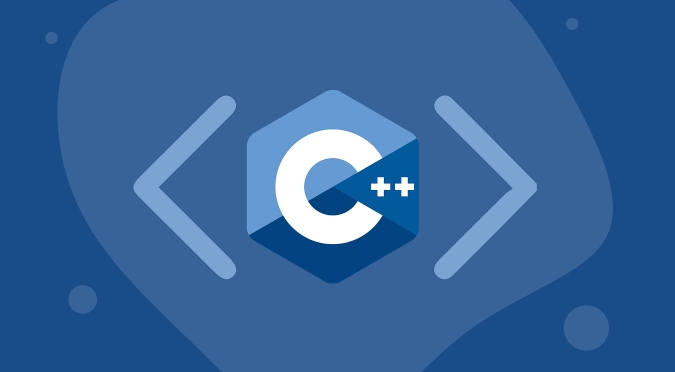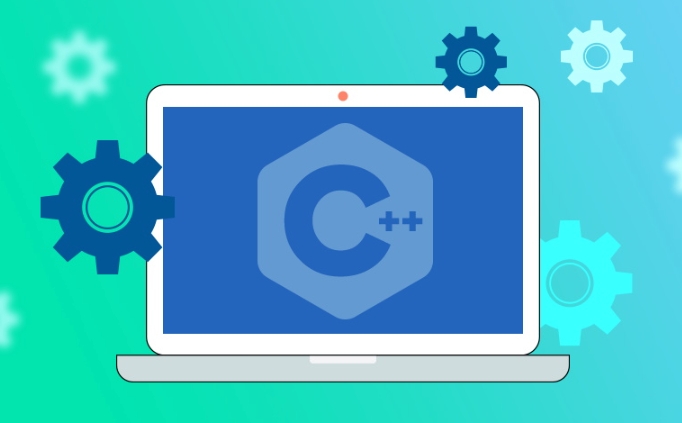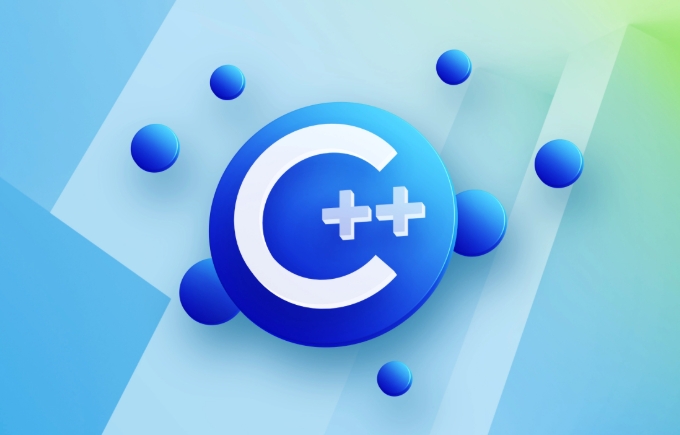There are many initialization methods in C, which are suitable for different scenarios. 1. Basic variable initialization includes assignment initialization (int a = 5;), construction initialization (int a(5);), and list initialization (int a{5};), where list initialization is more stringent and recommended; 2. Class member initialization can be assigned by constructor body or member initialization list (MyClass(int val) : x(val) {}), which is more efficient and suitable for const and reference members. C 11 also supports direct in-class initialization; 3. Array and container initialization can use traditional methods or C 11's std::array and std::vector, which support list initialization and improve security; 4. Default initialization is suitable for situations where no explicit initialization is performed, while value initialization (such as int a{};) can provide a definite initialization, which is recommended to avoid undefined behavior. Choosing the initialization method rationally helps write clearer and safer code.

There are many ways to initialize C, and the initialization methods applicable to different scenarios are also different. Understanding these technologies can help write clearer and safer code.

How to initialize basic variables
In C, there are three most common ways to initialize variables: assignment initialization, construction initialization and list initialization.
- Assignment initialization :
int a = 5; - Construct initialization :
int a(5); - List initialization :
int a{5};
Among them, list initialization (introduced by C 11) is more stringent in preventing type conversion, such as it does not allow narrow conversion. For example, int a{5.5}; will report an error, while int a = 5.5; will be silently truncated. It is recommended to prioritize list initialization in new projects.

Initialization of class members
There are several ways to initialize member variables in a class, which are common in constructors and member initialization lists.
Intrabody assignment of constructors is the most common way to write, but not the best. For example:

class MyClass {
int x;
public:
MyClass(int val) { x = val; }
};A better approach is to initialize the list with members :
MyClass(int val) : x(val) {}This method is necessary for const members, reference members, and object members without default constructors. And from a performance perspective, it avoids the process of describing the default construct and then assigning values.
C 11 also supports direct initialization of members within a class:
class MyClass {
int x = 0;
};This reduces the duplicate code of the constructor and is suitable for cases where multiple constructors share initial values.
Initialization of arrays and containers
Array initialization can be done in traditional parentheses:
int arr[5] = {1, 2, 3, 4, 5}; After C 11, it is recommended to use std::array or std::vector , which supports list initialization:
std::array<int, 5> arr = {1, 2, 3, 4, 5};
std::vector<int> vec = {1, 2, 3}; For dynamically sized containers, vector also supports specifying sizes and initial values when constructed:
std::vector<int> vec(5, 10); // 5 elements, each of which is 10
Using standard library containers can improve code security and maintainability.
Default initialization and value initialization
Sometimes in C, there are cases where it is not explicitly initialized, and the default initialization or value initialization will be performed according to the context.
- Default Initialization : For local variables, the value of the built-in type variable that is not initialized is undefined (i.e., random value).
- Value Initialization : Initialize with
{}, the variable is initialized to zero or default constructor values.
For example:
int a{}; // a = 0
std::string s{}; // s is an empty stringIf you want a variable to have a definite initial value, especially outside functions or in classes, it is recommended to use value initialization.
Basically that's it. Different initialization methods are suitable for different scenarios. Using them correctly can avoid many bugs and make the code clearer.
The above is the detailed content of C Initialization techniques. For more information, please follow other related articles on the PHP Chinese website!

Hot AI Tools

Undress AI Tool
Undress images for free

Undresser.AI Undress
AI-powered app for creating realistic nude photos

AI Clothes Remover
Online AI tool for removing clothes from photos.

Clothoff.io
AI clothes remover

Video Face Swap
Swap faces in any video effortlessly with our completely free AI face swap tool!

Hot Article

Hot Tools

Notepad++7.3.1
Easy-to-use and free code editor

SublimeText3 Chinese version
Chinese version, very easy to use

Zend Studio 13.0.1
Powerful PHP integrated development environment

Dreamweaver CS6
Visual web development tools

SublimeText3 Mac version
God-level code editing software (SublimeText3)

Hot Topics
 What is high-frequency virtual currency trading? The principles and technical implementation points of high-frequency trading
Jul 23, 2025 pm 11:57 PM
What is high-frequency virtual currency trading? The principles and technical implementation points of high-frequency trading
Jul 23, 2025 pm 11:57 PM
High-frequency trading is one of the most technologically-rich and capital-intensive areas in the virtual currency market. It is a competition about speed, algorithms and cutting-edge technology that ordinary market participants are hard to get involved. Understanding how it works will help us to have a deeper understanding of the complexity and specialization of the current digital asset market. For most people, it is more important to recognize and understand this phenomenon than to try it yourself.
 What is a destructor in C ?
Jul 19, 2025 am 03:15 AM
What is a destructor in C ?
Jul 19, 2025 am 03:15 AM
The destructor in C is a special member function that is automatically called when an object is out of scope or is explicitly deleted. Its main purpose is to clean up resources that an object may acquire during its life cycle, such as memory, file handles, or network connections. The destructor is automatically called in the following cases: when a local variable leaves scope, when a delete is called on the pointer, and when an external object containing the object is destructed. When defining the destructor, you need to add ~ before the class name, and there are no parameters and return values. If undefined, the compiler generates a default destructor, but does not handle dynamic memory releases. Notes include: Each class can only have one destructor and does not support overloading; it is recommended to set the destructor of the inherited class to virtual; the destructor of the derived class will be executed first and then automatically called.
 Explain RAII in C
Jul 22, 2025 am 03:27 AM
Explain RAII in C
Jul 22, 2025 am 03:27 AM
RAII is an important technology used in resource management in C. Its core lies in automatically managing resources through the object life cycle. Its core idea is: resources are acquired at construction time and released at destruction, thereby avoiding leakage problems caused by manual release. For example, when there is no RAII, the file operation requires manually calling fclose. If there is an error in the middle or return in advance, you may forget to close the file; and after using RAII, such as the FileHandle class encapsulates the file operation, the destructor will be automatically called after leaving the scope to release the resource. 1.RAII is used in lock management (such as std::lock_guard), 2. Memory management (such as std::unique_ptr), 3. Database and network connection management, etc.
 Member Initialization Lists in C
Jul 19, 2025 am 02:03 AM
Member Initialization Lists in C
Jul 19, 2025 am 02:03 AM
In C, the member initialization list is used to initialize member variables in the constructor, especially for const members, reference members, class members without default constructors, and performance optimization. Its syntax begins with a colon and is followed by a comma-separated initialization item. The reasons for using member initialization list include: 1. The const member variable must be assigned value at initialization; 2. The reference member must be initialized; 3. Class type members without default constructors need to explicitly call the constructor; 4. Improve the construction efficiency of class type members. In addition, the initialization order is determined by the order of members declared in the class, not the order in the initialization list, so be careful to avoid relying on uninitialized members. Common application scenarios include initialization constants, references, complex objects and parameter-transferred constructions
 Using std::optional in C
Jul 21, 2025 am 01:52 AM
Using std::optional in C
Jul 21, 2025 am 01:52 AM
To determine whether std::optional has a value, you can use the has_value() method or directly judge in the if statement; when returning a result that may be empty, it is recommended to use std::optional to avoid null pointers and exceptions; it should not be abused, and Boolean return values or independent bool variables are more suitable in some scenarios; the initialization methods are diverse, but you need to pay attention to using reset() to clear the value, and pay attention to the life cycle and construction behavior.
 C vector get first element
Jul 25, 2025 am 12:35 AM
C vector get first element
Jul 25, 2025 am 12:35 AM
There are four common methods to obtain the first element of std::vector: 1. Use the front() method to ensure that the vector is not empty, has clear semantics and is recommended for daily use; 2. Use the subscript [0], and it also needs to be judged empty, with the performance comparable to front() but slightly weaker semantics; 3. Use *begin(), which is suitable for generic programming and STL algorithms; 4. Use at(0), without manually null judgment, but low performance, and throw exceptions when crossing the boundary, which is suitable for debugging or exception handling; the best practice is to call empty() first to check whether it is empty, and then use the front() method to obtain the first element to avoid undefined behavior.
 How to develop AI-based text summary with PHP Quick Refining Technology
Jul 25, 2025 pm 05:57 PM
How to develop AI-based text summary with PHP Quick Refining Technology
Jul 25, 2025 pm 05:57 PM
The core of PHP's development of AI text summary is to call external AI service APIs (such as OpenAI, HuggingFace) as a coordinator to realize text preprocessing, API requests, response analysis and result display; 2. The limitation is that the computing performance is weak and the AI ecosystem is weak. The response strategy is to leverage APIs, service decoupling and asynchronous processing; 3. Model selection needs to weigh summary quality, cost, delay, concurrency, data privacy, and abstract models such as GPT or BART/T5 are recommended; 4. Performance optimization includes cache, asynchronous queues, batch processing and nearby area selection. Error processing needs to cover current limit retry, network timeout, key security, input verification and logging to ensure the stable and efficient operation of the system.
 C bit manipulation example
Jul 25, 2025 am 02:33 AM
C bit manipulation example
Jul 25, 2025 am 02:33 AM
Bit operation can efficiently implement the underlying operation of integers, 1. Check whether the i-th bit is 1: Use n&(1






